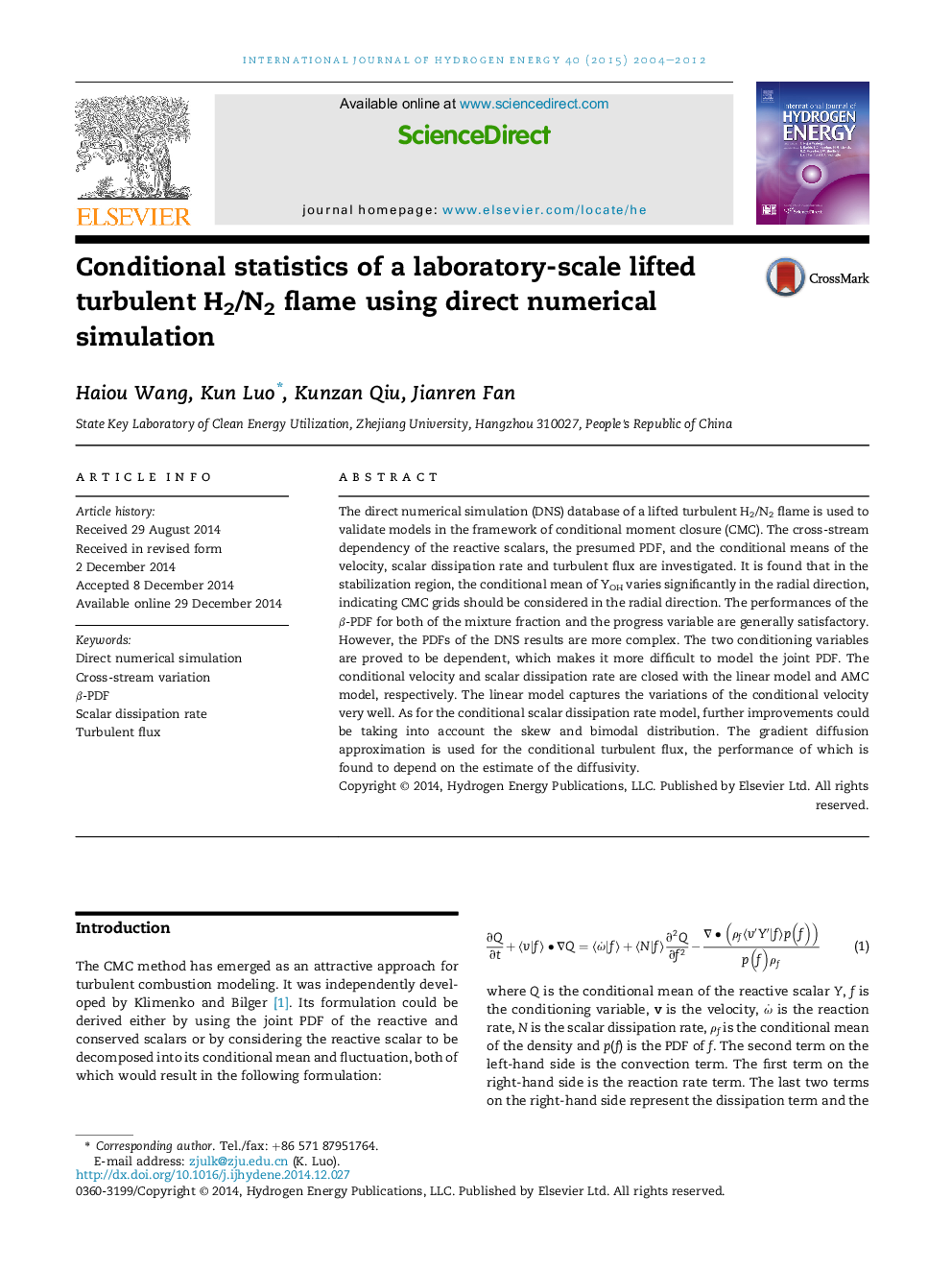| Article ID | Journal | Published Year | Pages | File Type |
|---|---|---|---|---|
| 7716580 | International Journal of Hydrogen Energy | 2012 | 9 Pages |
Abstract
The direct numerical simulation (DNS) database of a lifted turbulent H2/N2 flame is used to validate models in the framework of conditional moment closure (CMC). The cross-stream dependency of the reactive scalars, the presumed PDF, and the conditional means of the velocity, scalar dissipation rate and turbulent flux are investigated. It is found that in the stabilization region, the conditional mean of YOH varies significantly in the radial direction, indicating CMC grids should be considered in the radial direction. The performances of the β-PDF for both of the mixture fraction and the progress variable are generally satisfactory. However, the PDFs of the DNS results are more complex. The two conditioning variables are proved to be dependent, which makes it more difficult to model the joint PDF. The conditional velocity and scalar dissipation rate are closed with the linear model and AMC model, respectively. The linear model captures the variations of the conditional velocity very well. As for the conditional scalar dissipation rate model, further improvements could be taking into account the skew and bimodal distribution. The gradient diffusion approximation is used for the conditional turbulent flux, the performance of which is found to depend on the estimate of the diffusivity.
Related Topics
Physical Sciences and Engineering
Chemistry
Electrochemistry
Authors
Haiou Wang, Kun Luo, Kunzan Qiu, Jianren Fan,
